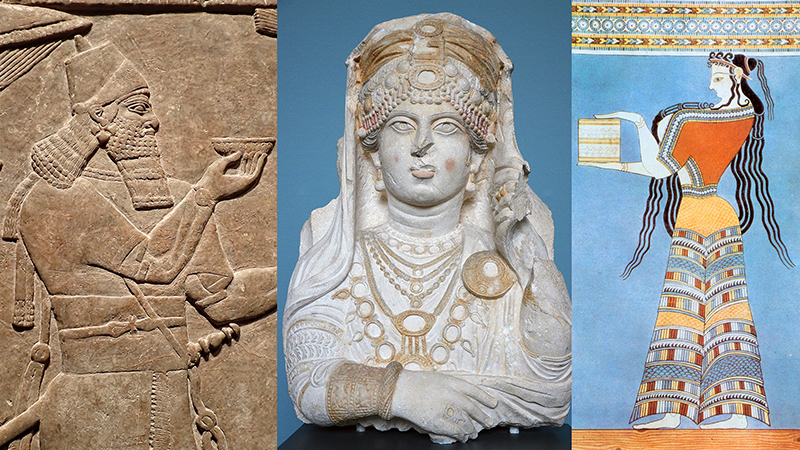About the lecture
Masculinity and beauty have been bedfellows for millennia. Face, body, muscles, hair, beard, voice, fragrance…these features, along with many others, have been entangled in the social and political discourse since the earliest representations of masculinity. In the many cultures that form the Mesopotamian repertoire, the intersection of masculinity and beauty found expression in a multitude of literary and visual compositions. Today, with our investigations into the cultures of the body, gender, dress, and the senses in antiquity, beauty can be seen to play an axial role not only in the erotic poetics of the time, but also in statesmanship and imperial formations. In fact, many descriptions of political leaders, war generals, and high functionaries of the state come down to us which reveal a great concern with bodily symmetry and facial perfection in the literary and visual compositions of Iraqi antiquity. Evidence also shows that in these cultures, beauty was a necessary tool in the rhetoric of radiance for military kings, frequently construed explicitly or metaphorically in most of the extant media. Furthermore, in texts like the Epic of Gilgamesh, masculine beauty reaches a tantalising point where even the gods find it irresistible. In this talk, I will be looking at these very instances that give us a glimpse into how different Mesopotamian cultures construed male beauty, and I will attempt to discuss several strands of its application in the social and political affairs of the periods discussed.

About Dr. N’Shea
Omar N’Shea is a senior lecturer at the University of Malta. His main research interests are the art of the ancient Near East, the visual cultures of Mediterranean prehistory, and masculinities. He is currently doing fieldwork in Malta, and writing a book on the masculinities in the art of the Neo-Assyrian empire.
Suggestions for further Reading
- Assante, J. 2017. “Men Looking at Men: The Homoerotics of Power in the State Arts of Assyria.” In Being a Man: Negotiating Ancient Constructs of Masculinity, edited by Ilona Zsolnay, 42-82. London and New York: Routledge.
- Bahrani, Z. 2001. Women of Babylon: Gender and Representation in Mesopotamia. London and New York: Routledge.
- Winter, I.J. 1996. “Sex, Rhetoric, and the Public Monument: the Alluring Body of Naram-Sin of Agade.” In Sexuality in ancient art: Near East, Greece, and Italy, edited by N.B. Kampen and b. Bergmann, 11-26. Cambridge and New York: Cambridge University Press.
A Digital Lecture Series on Beauty, Attractiveness and Sex Appeal in the Ancient Mediterranean World
The purpose of this lecture series is to investigate concepts of beauty and attractiveness in ancient cultures, and to explore how these concepts relate to gender, hierarchy and power.
Five excellent international researchers, experts on the material cultures and texts of the ancient Mediterranean, will each present a 30-minute lecture, followed by amble time for questions and discussion.
We are interested in mapping ancient attractiveness as broadly as possible and therefore we encourage our speakers to consider beauty from a multi-sensorial perspective and to give thought to both touch, smell, taste, hearing and vision in constructions of beauty and sex appeal.
The lecture series is organized by Professor Anne Katrine de Hemmer Gudme and hosted by The Faculty of Theology at the University of Oslo and the Faculty’s research group Biblical Texts, Cultures and Receptions.
Digital event - how to participate
The seminar will be held digitally due to Covid-19. If you wish to attend the the conference you need to register in advance.
- A zoom link will be sent to you before the event.
- You can download Zoom or use your browser: https://zoom.us/download
- This lecture is part of the lecture series Ancient Attraction
